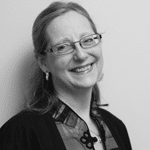Gateway is a Department of Energy-sponsored demonstration project. It looks at LEDs being used in real, honest-to-goodness projects, tracks how easy it is to specify, order, and install them, and how well they work over time. We talk to installers, maintenance people, and users, and we get feedback on how people do or don’t like the products. We also monitor energy use and conduct life-cycle cost analyses. The intent is to tell a story about LEDs that encourages people to use them wisely and to avoid pitfalls. The hope is that people will do a better job of specifying LEDs and that they’ll install products that people like and that will begin saving energy as soon as possible.
Short- and long-term testing is an important part of the project. Some products are sent to photometric labs when they’re new so we know how many lumens they deliver, how much power they draw, what the color is, what the light distribution is, etc. Then we decide with the client how far down the road we’re going to take those same products and send them back for photometry. This allows us to track how products are doing over time.
We have a range of projects that we look at. Some involve outdoor street lighting, parking garages, and high-end hotels. We even have results on museums that were published recently, which I’m very happy about because they tell a wonderful story about the visual effects LEDs can produce, their impact on art conservation, and their life-cycle cost implications. We also have projects looking at LED products in offices and classrooms. It’s an interesting program that gathers a lot of technical and experiential information and tries to tell a story in a readable way.
There have been a lot of obstacles to getting people to embrace LEDs. They’re often expensive because they’re new technology, and you don’t want to spend the money unless you know it’s going to give you a good energy story and be a desirable and durable product. Color has been funky in past years, and you don’t want to specify a product where the client is going to be unhappy with the color results, especially in applications where color is critical. Energy efficiency has been marginal in some applications, especially when compared to fluorescents. The great news is LEDs are improving quickly. There are already products that excel visually and save significant energy.
We’ve had some surprising findings along the way. For example, some LED products aren’t happy being dimmed. They may produce flashing or jittery effects—behavior that’s unacceptable. Some LEDs in Gateway studies performed well for the first year, but the fixture was too hot for the LED product and the lamps degraded in light output. We also found some lamps that are shifting slightly yellow after a year’s operation. We don’t know what’s going on there or how to prevent it from happening yet, but we’re checking into it and will provide an update to the original Gateway report when we know what the solution is. Part of the job of Gateway is to identify any problems, inform specifiers and manufacturers about the issues, and then explain how to fix them.
Gateway is just one of the projects I work on. I moved here for an opportunity to make a difference in the lighting industry in terms of energy efficiency. As a designer in upstate New York, I worked on LEED and non-LEED projects, but energy efficiency was always my focus. Working for PNNL, I can really work toward lighting energy efficiency, reminding the industry that there’s more to quality lighting than just lumens per watt. Here, I’m in a position to help engineers understand what issues specifiers and users need to know about and what issues they deal with on projects in different environments. If LED products become more responsive to those needs, they’ll be adopted sooner and will save significant energy more quickly.
 Naomi Miller landed at Pacific Northwest National Laboratory as a designer and scientist in the Solid State Lighting Program after ten years at her own lighting-design studio in Troy, NY. She is a fellow of the IESNA and the IALD. Her work bridges the gap between technology and application by helping the industry overcome hurdles in LED use.
Naomi Miller landed at Pacific Northwest National Laboratory as a designer and scientist in the Solid State Lighting Program after ten years at her own lighting-design studio in Troy, NY. She is a fellow of the IESNA and the IALD. Her work bridges the gap between technology and application by helping the industry overcome hurdles in LED use.

